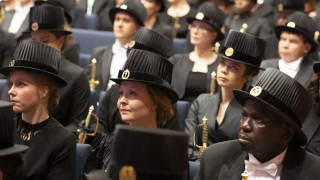
News media ownership means power, but within limits
The concentration of media ownership and the power of owners over media content come up regularly in public discussion. We can find worrying examples from around the world what the concentration of media leads to – depending on the market and the owner – to the exhaustion of editorial staff by cost cutting, to more one-sided content, to self-censorship or to representing the owner’s voice only.
We got a recent example of the concentration of media power in September when one of the few Finnish media chains, Sanoma, announced that their newspapers will no longer use content from the Finnish news agency STT. As the only Finnish news agency, STT has so few customers that the slam of the door closing behind this exiting financer started to sound like a death knell.
Concerns for the concentration of media ownership can usually be crystallised into two reasons. On the one hand, the owners may abuse their power and thus bias public discussion to their own advantage. On the other hand, the owners may – without any hidden agenda and purely with profit-seeking motivations in mind – make decisions that entail risks for the rest of society.
Research gives no explicit answer regarding the meaning of ownership
The meaning of media ownership and its concentration have been studied for ages, but with contradictory results. Sometimes owners use the media to advocate for their own mission. In the United States, it has been observed that the newspapers acquired by the media mogul Rupert Murdoch suddenly change their political stance. But it has also been observed in the United States that ending up as part of a print media chain can improve the operating conditions of some newspapers.
Some studies have found that no matter who the owner is, content remains somewhat similar, a finding that applies to my own study of the local and regional press in Finland.
Why then are these findings so contradictory?
The Finnish newspaper sector is very different from that in the United States: Whereas in Finland almost every newspaper is owned by a company with long experience in the field of journalism, a major share of US newspapers belongs to hedge funds or other actors from outside the field, such as Jeff Bezos, the owner of Amazon.
One explanatory model for the seemingly random findings is offered by a large-scale media study in four countries, which was recently published by Benson, Hessérus, Neff and Sedel. They concluded that content is similar if the media owners, audiences and financing models are similar. A newspaper owned by a super-rich technology billionaire can make a loss as long as it pleases whoever is paying for it.
A public broadcasting company can stay afloat as long as a sufficiently large majority of people is satisfied with it and does not elect to power a party that promises to get rid of it. The media owned by limited liability companies that represent decentralised ownership publish content that can be sold to a sufficient number of customers, and so on.
For media companies, audience analytics are a tougher boss than the owner
According to the old wisdom of journalists and detectives, truth can be found by following the stream of money all the way up to its original sources. Based on research findings, the same principle seems to apply to the mystery of power pertaining to media ownership as well. In Finland, media moguls cannot (and in the light of my interviews, don’t even try to) manipulate the content of their media properties to their own advantage because the corporations need the subscriptions income from their audience.
The same applies to all bigger domestic media companies: The greatest power is vested in audience analytics and related indicators for the customers’ willingness to pay.
It is easy for professionally led companies to draw the same conclusions as to what kind of content is profitable.
For the media, the financial department is the most important critic.
My study suggests that some topics previously typical of newspaper are now selling poorly. Earlier, this has been difficult to notice, but nowadays analytics proves, with a single article’s precision, what people click and read, and what stories make them buy keys to the paywall gate. Politics, culture and a part of traditional sport news have given way in this comparison to more tempting topics.
Concerns should be focused on financing
Research thus suggests that concentrated media ownership is not automatically a problem – at least when the concentrating media must still serve the audience rather than the interests of a dominant political party or big business, for example. From this perspective, the situation in Finland is good. Hence, at least part of the concern should be directed to the forms of ownership and models of financing.
In this respect, there is still room for improvement in Finland.
Foundation-based and non-profit news media are rare, and in practice, our public sphere consists of and relies on the provision of commercial media and the Finnish Broadcasting Company.
They serve many needs and groups of people, but hardly all.
Another problem pertains to funding. The editorial staff of the newspapers I studied have shrunk by roughly a third in a decade, and the volume of news stories has decreased by 40% on average. Apart from one exception, stories dealing with local politics have decreased by 40 to 80 percent.
According to the journalists I interviewed, there are two reasons for this: Either there are not enough journalists to explore everything, or readership analytics show that only a few stories dealing with politics are worth the effort.
Unfortunately, not all that is beneficial for society is commercially profitable.
Ville Manninen is a grant researcher and university teacher at the Department of Language and Communication Studies, University of Jyväskylä.






